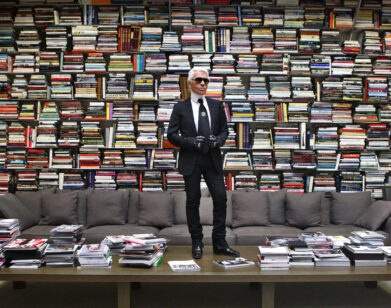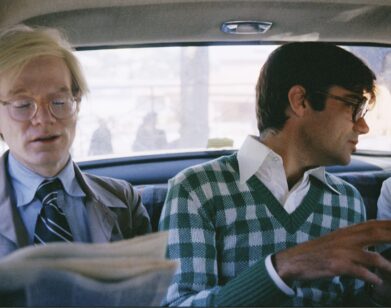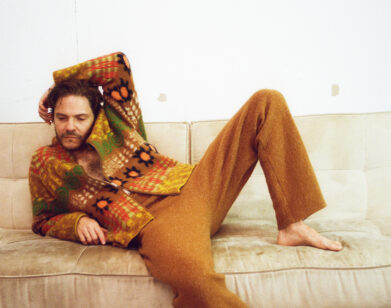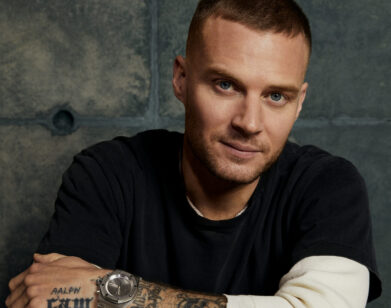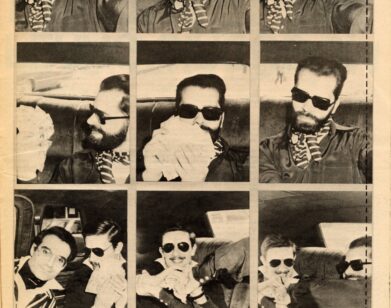Karl Lagerfeld Once Took an Entire Issue of Interview on a Journey Inside Paris Fashion
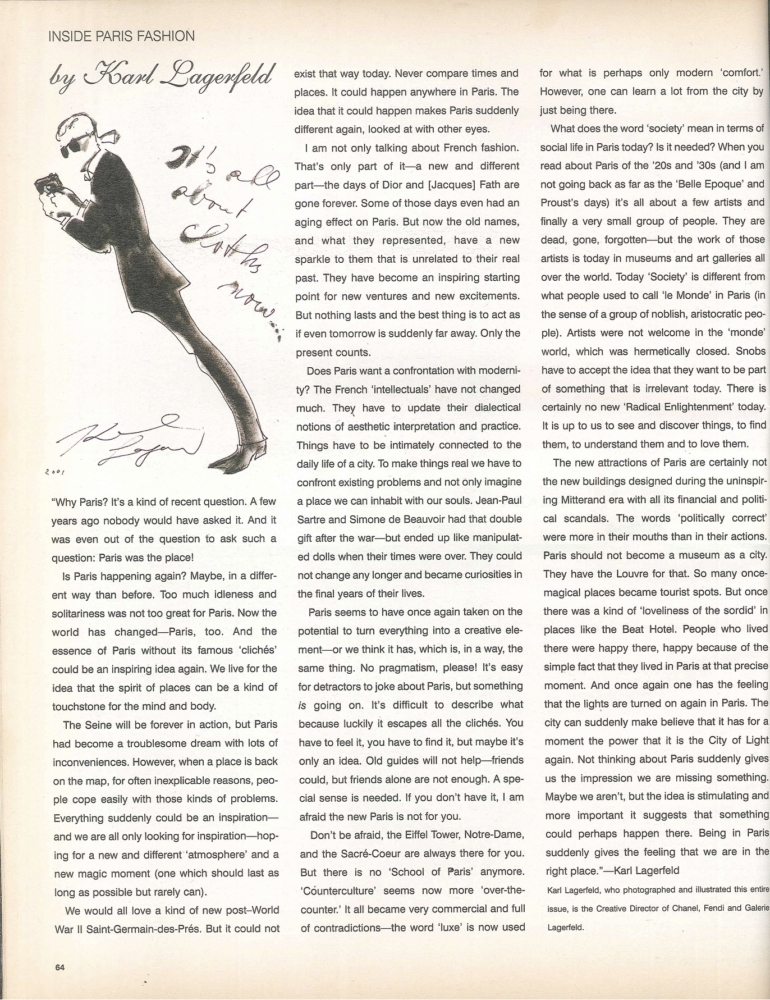
In 2001, Karl Lagerfeld guest-edited an entire issue of Interview. The multi-hyphenate designer and fashion world Übermensch photographed and illustrated, as the cover announced, over “100 hot stars of France.” From rising actors Vincent Cassel and Audrey Tautou to mainstays Denis Lavant and Daft Punk, the issue served as cosmic print-out of Lagerfeld’s cultural eye. The issue was assembled in Lagerfeld’s studio behind the bookshop on 7 Rue de Lille. “He had an infinite number of ideas. He never seemed to tire,” wrote Interview’s editor-in-chief, Ingrid Sischy, at the time. “[His] energy to shoot the city was boundless, showing a profound feeling for the City of Light.” Please, in memory of the designer, who died today at the age of 85, enjoy his love letter to Paris as it existed in his ceaselessly creative mind. —NATHAN TAYLOR PEMBERTON
———
Why Paris? It’s a kind of recent question. A few years ago nobody would have asked it. And it was even out of the question to ask such a question: Paris was the place!
Is Paris happening again? Maybe, in a different way than before. Too much idleness and solitariness was not too great for Paris. Now the world has changed — Paris, too. And the essence of Paris without its famous “clichés” could be an inspiring idea again. We live for the idea that the spirit of places can be a kind of touchstone for the mind and body.
The Seine will be forever in action, but Paris had become a troublesome dream with lots of inconveniences. However, when a place is back on the map, for often inexplicable reasons, people cope easily with those kinds of problems. Everything suddenly could be an inspiration — and we are all only looking for inspiration — hoping for a new and different “atmosphere” and a new magic moment (one which should last as long as possible but rarely can).
We would all love a kind of new post-World War II Saint-Germain-des-Près. But it could not exist that way today. Never compare times and places. It could happen anywhere in Paris. The idea that it could happen makes Paris suddenly different again, looked at with other eyes. I am not only talking about French fashion. That’s only part of it — a new and different part — the days of Dior and [Jacques] Fath are gone forever. Some of those days even had an aging effect on Paris. But now the old names, and what they represented, have a new sparkle to them that is unrelated to their real past. They have become an inspiring starting point for new ventures and new excitements. But nothing lasts and the best thing is to act as if even tomorrow is suddenly far away. Only the present counts.
Does Paris want a confrontation with modernity? The French “intellectuals” have not changed much. They have to update their dialectical notions of aesthetic interpretation and practice. Things have to be intimately connected to the daily life of a city. To make things real, we have to confront existing problems and not only imagine a place we can inhabit with our souls. Jean-Paul Sartre and Simone de Beauvoir had that double gift after the war — but ended up like manipulated dolls when their times were over. They could not change any longer and became curiosities in the final years of their lives.
Paris seems to have once again taken on the potential to turn everything into a creative element — or we think it has, which is, in a way, the same thing. No pragmatism, please! It’s easy for detractors to joke about Paris, but something is going on. It’s difficult to describe what because luckily it escapes all the clichés. You have to feel it, you have to find it, but maybe it’s only an idea. Old guides will not help — friends could, but friends alone are not enough. A special sense is needed. If you don’t have it, I am afraid the new Paris is not for you. Don’t be afraid, the Eiffel Tower, Notre-Dame, and the Sacré-Cœur are always there for you. But there is no “School of Paris” anymore. “Counterculture” seems now more “over-the-counter.” It all became very commercial and full of contradictions — the word “luxe” is now used for what is perhaps only modern “comfort.” However, one can learn a lot from the city by just being there.
What does the word “society” mean in terms of social life in Paris today? Is it needed? When you read about Paris of the 20s and 30s (and I am not going back as far as the “Belle Epoque” and Proust’s day), it’s all about a few artists and finally a very small group of people. They are dead, gone, forgotten — but the work of those artists is today in museums and art galleries all over the world. Today “society” is different from what people used to call “le Monde” in Paris (in the sense of a group of noble-ish, aristocratic, people). Artists were not welcome in the “monde” world, which was hermetically closed. Snobs have to accept the idea that they want to be part of something that is irrelevant today. There is certainly no new “Radical Enlightenment” today. It is up to us to see and discover things, to find them, to understand them and to love them.
The new attractions of Paris are certainly not the new buildings designed during the uninspiring Mitterrand era with all its financial and political scandals. The words “politically correct” were more in their mouths than in their actions. Paris should not become a museum as a city. They have the Louvre for that. So many once-magical places like the Beat Hotel. People who lived there were happy there, happy because of the simple fact that they lived in Paris at that precise moment. And once again one has the feeling that the lights are turned on again in Paris. The city can suddenly make believe that it has for a moment the power that it is the City of Light again. Not thinking about Paris suddenly gives us the impression we are missing something. Maybe we aren’t, but the idea is stimulating and more important it suggests that something could perhaps happen there. Being in Paris suddenly gives the feeling that we are in the right place.


